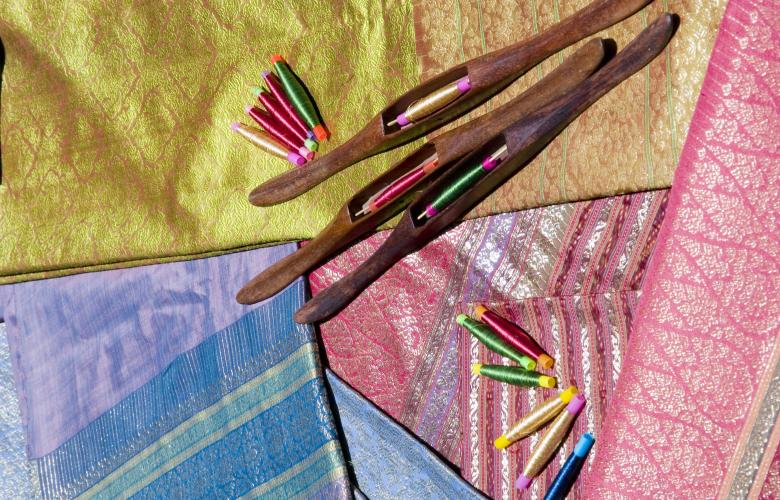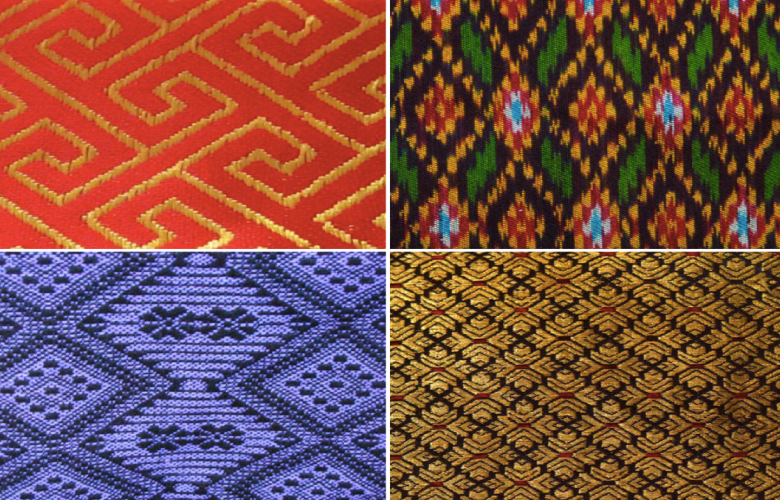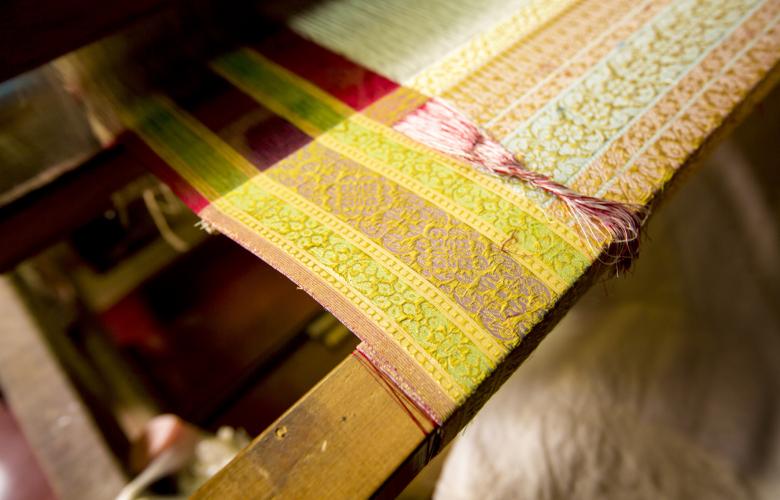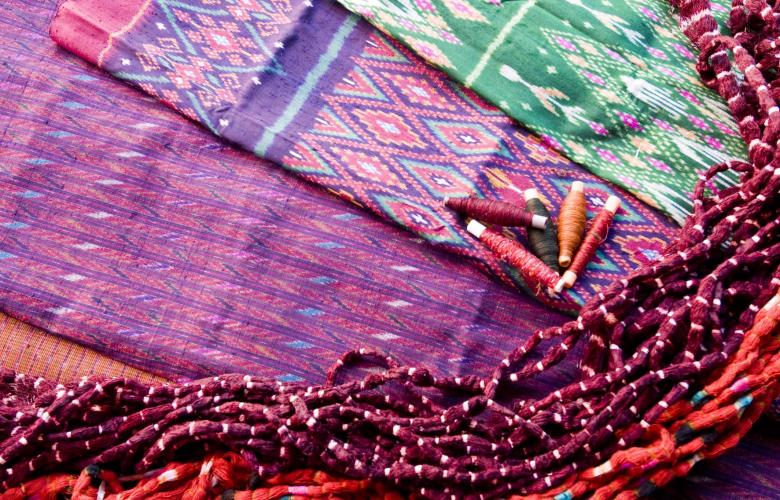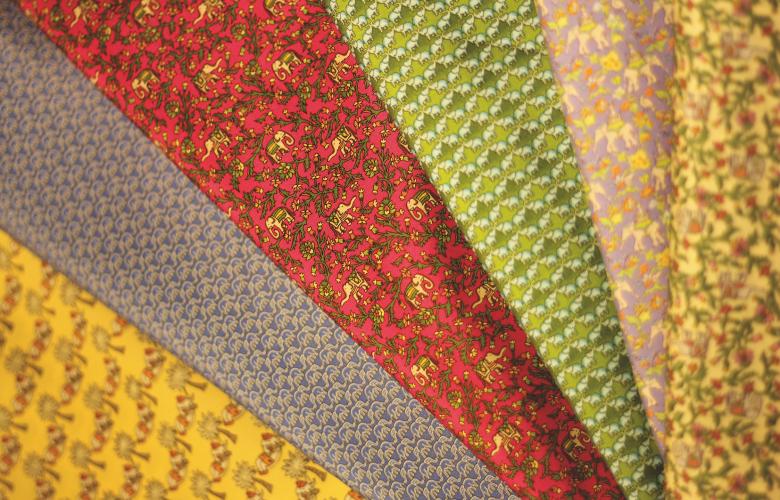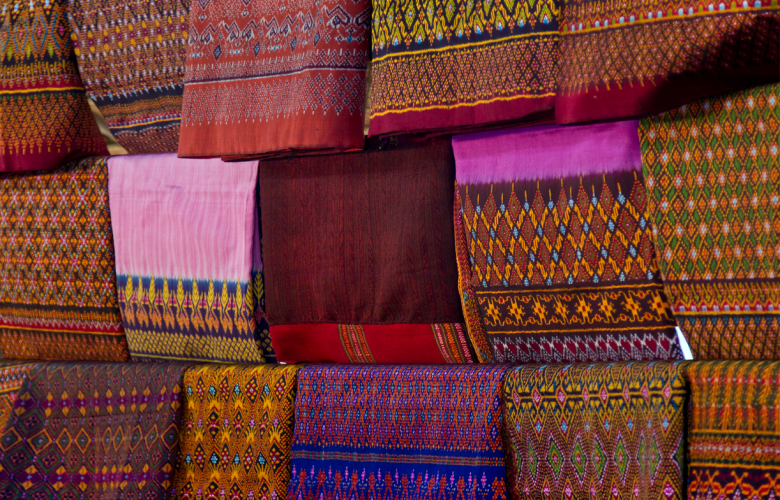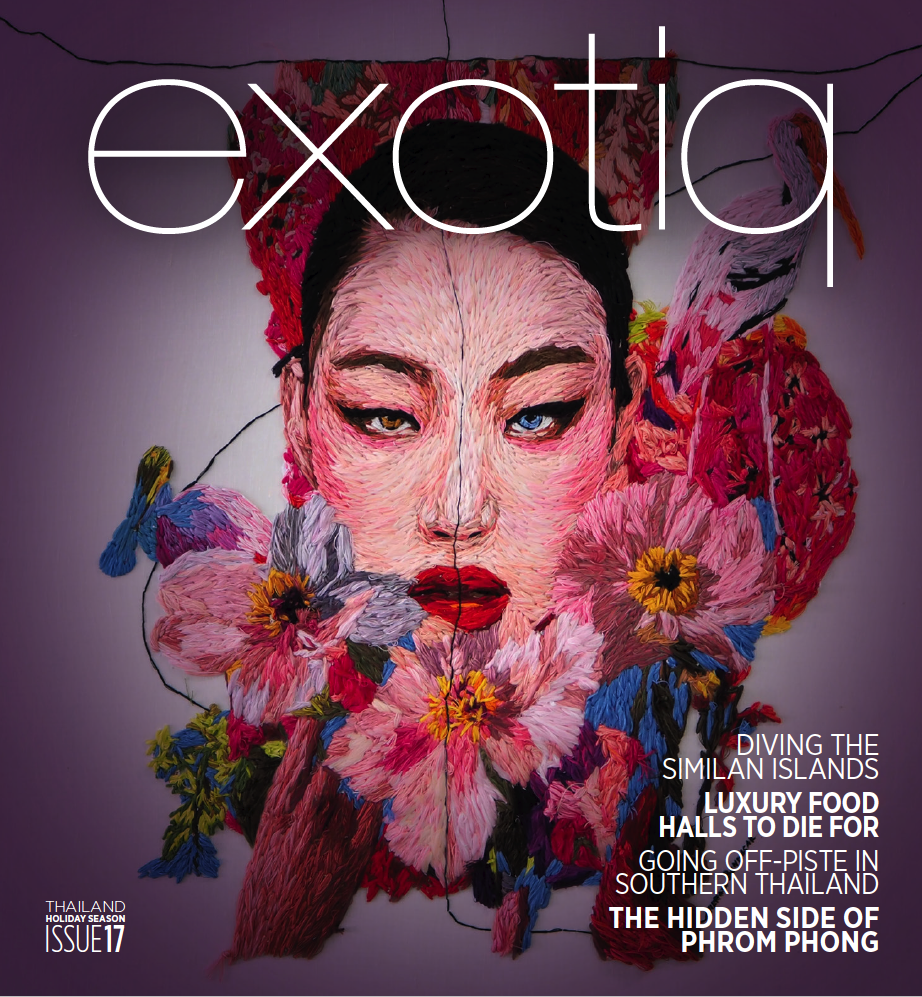- Bangkok
- Central Thailand
- Eastern Thailand
- Northeast Thailand
- Northern Thailand
- Southern Thailand
- Southern Thailand - Chumphon
- Southern Thailand - Krabi
- Southern Thailand - Phang Nga
- Southern Thailand - Phuket
- Central Island - Phuket
- Central West Coast - Phuket
- Bang Tao Beach - Phuket (Central West Coast)
- Emerald Bay - Phuket (Central West Coast)
- Kalim Beach - Phuket (Central West Coast)
- Kamala Beach - Phuket (Central West Coast)
- Laguna - Phuket (Central West Coast)
- Layan Beach - Phuket (Central West Coast)
- Patong Beach - Phuket (Central West Coast)
- Surin Beach - Phuket (Central West Coast)
- East Coast - Phuket
- North West Coast - Phuket
- Small Islands - Phuket
- South West Coast - Phuket
- Southern Coast - Phuket
- Southern Thailand - Satun
- Southern Thailand - Songkhla
- Southern Thailand - Surat Thani
Treasures of a Kingdom
Thailand remains a country of weavers and wooden looms; despite the rise of mass manufactured materials and fashion.
By Tom Stephens
Contact
Dec 15, 2017
Village-based weaving is and always has been a way of life in Thailand for generations. Locally-produced fabrics date from a rich history of culturally-based materials and clothing, often made in the same way they have been for centuries and sold at local markets across the country.
Visiting these local weaving centres provides unique opportunities to personally experience the country’s authentic weaving heritage, and contribute directly to textile-producing communities.
Supporting local weavers by purchasing the fruits of their labours helps sustain the trade for future generations, while at the same time enabling first-hand knowledge of these incredible fabrics and their fundamental importance to communities.
kalasin-000019.jpg

Woven fabric from Kalasin
For example, in the Isan region, women find strength, merit and economic status through traditional textile production - buying directly from weavers or local markets in these small Thai villages empowers women, whilst supporting the local economy and small businesses.
The country’s swathe of vastly differing regions produces similarly different styles of textiles reflecting their individual character. Exploring all these various textiles opens up fascinating insights into the histories and spirits of these regions.
Northern Hill Tribe Textiles
The ethnic dress of the northern Thai hill tribes is a showcase of these textiles, for each tribe, originally from the Himalayan foothills, has a unique traditional textile tradition.
Silver and gold thread embroidery, seed embroidery, applique and chain stitching of animal and insect motifs are popular adornments. Women of the six most prevalent tribes; Karen, Lisu, Meo, Lahu, Yao and Akha, all go to Chiang Mai markets to sell their hand-woven textiles.
Similarly, the art of Mo Hom has advanced in recent years to meet the desires of creative consumers looking for authentic artisan products. Mo Hom is cotton fabric manipulated into various patterns using the strength of the dye and time soaked in the solution, producing stunning shades of indigo across a spectrum from dark navy to sunlight blue.
thai-pattern-pattern-wallpaper.jpg
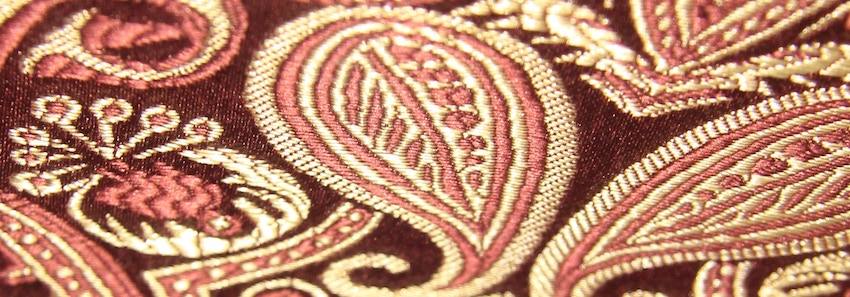
Silk wallpaper product
Southern Region Textiles
Textiles of southern Thailand exhibit characteristics and influences of those from Malaysia and Indonesia’s island of Sumatra.
Pha Yok is a rare cloth woven only in Nakhon Si Thammarat and Trang provinces. It’s another type of fabric favoured in the past by royals and people of noble birth and like Songket (a Malaysian cloth) requires highskilled weavers and complicated techniques. Gold and silver thread woven into this kind of cloth creates its lustrous texture.
Hang Karok is a technique unique to the southern region that uses two-coloured twisted thread before being woven. Centres of production include villages around Trang and in the Songkhla Lake area.
Northeast Mudmee Magic
The diversity of ethnic people who settled in villages on the Khorat Plateau led to an abundance of different weaving styles, producing a vast array of silk and cotton textiles. Each is unique and beautiful in its own right as every Northeastern or Isan village has its own signature style.
Mudmee silk is a staple of the Northeast region weaving industry, and H.M. Queen Sirikit is very fond of this kind of silk. Though it can be woven from cotton yarn, Mudmee is regarded as the Queen of Thai Silk because of the Thai Queen and the textile’s intricate patterns.
It’s woven in almost all provinces in the northeast region, including Khon Kaen, Nakhon Ratchasima, Roi Et, Surin, Buri Ram and Si Sa Ket.
Source: tourismthailand.org
Important Information:

